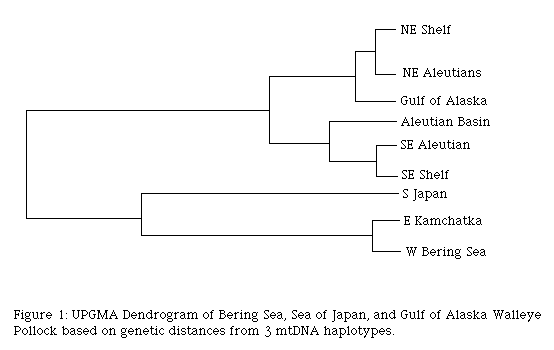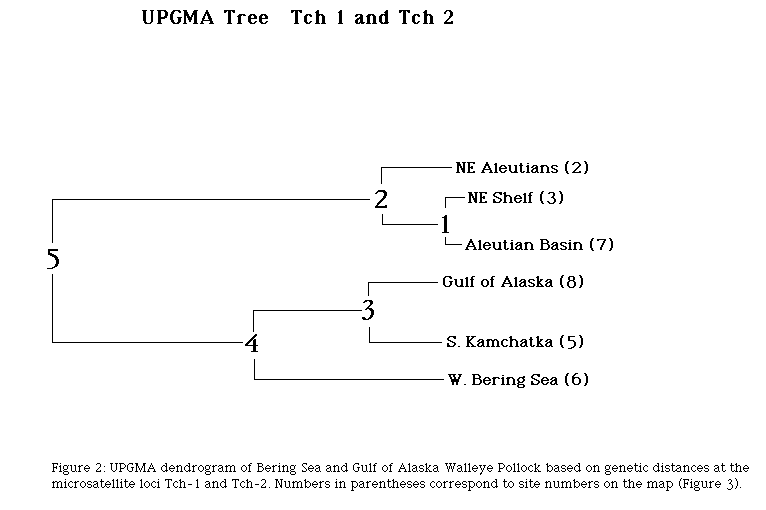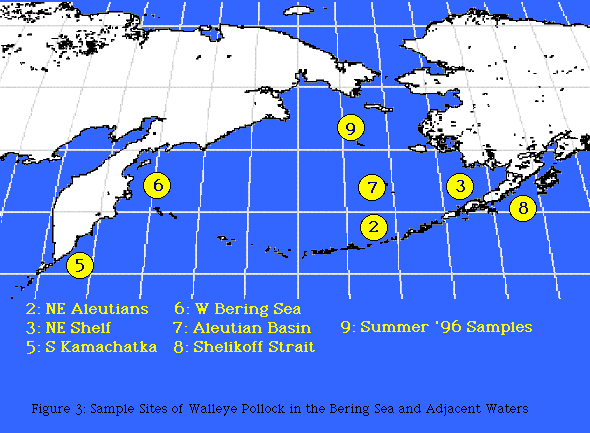
 U.S. Dept. of Commerce / NOAA / OAR / PMEL
U.S. Dept. of Commerce / NOAA / OAR / PMEL
OPERATIONS AND RESOURCES - The program had a core of principal investigators at the Alaska Fisheries Science Center (AFSC) and the Pacific Marine Environmental Laboratory (PMEL), both in Seattle, Washington, and a number of investigators from academic institutions across the nation. Principal leadership was supplied by Gary Stauffer/AFSC and Jim Overland/PMEL. Scientific guidance was furnished by Jim Schumacher/PMEL, Art Kendall/AFSC and Jeff Napp/AFSC. Allen Macklin/PMEL served as program coordinator. Two NOAA research vessels, Miller Freeman and Surveyor, provided working platforms in the Bering Sea during late winter, spring, and fall.
Work proceeded in the laboratory and in the field according to research plans developed by the program's principal investigators and reviewed by an external committee of senior scientists. Broad areas addressed were pollock populations, distributions of phytoplankton, ichthyoplankton, pollock eggs and larvae, juveniles, oceanography, and fisheries oceanography.
COLLABORATION - Bering Sea FOCI shares its information freely with other research projects of NOAA's Coastal Ocean Program, with Shelikof Strait FOCI, and with the academic community. An important operational goal of Bering Sea FOCI was to provide information to the North Pacific Fisheries Management Council to help manage the pollock resource.
SAMPLE RESULT - Dennis Powers, Stanford University, conducted genetics studies on walleye pollock of the North Pacific. Understanding from such studies enables fisheries biologists to distinguish between stocks, determine relative contributions of stocks to the fishery, and evaluate the impact of fishing pressure on those stocks. Samples were collected from both sides of the North Pacific Ocean: Gulf of Alaska, Aleutian Islands, Bering Sea, Kamchatka Peninsula and Japan. Powers used two approaches to discern differences in genetic structure of pollock, indicating their relative "genetic closeness" as separate populations. The first method analyzed mitochondrial DNA, the second examined specfic microsatellite loci.
The analysis of mitochonrial DNA in 164 individuals detected a small, but significant difference
between fishes from Asian waters, and those from the western Bering Sea and the Gulf of Alaska
(Figure 1).

The microsatellite loci showed a significant difference between eastern Bering Sea and western
Bering Sea fishes (sample size=221). In addition, they also showed a significant difference between
the Gulf of Alaska
samples and those from the Bering Sea (Figure 2). One of the loci, Tch 2, shows a null, or
non-amplifying, allele in the eastern Bering Sea samples. Characterization of the polymorphism
causing this null may itself be informative about population structure in pollock.

Figure 3 shows the origins (2, 3, 5, 6, 7, 8) of samples used for the microsatellite
part of the study.
